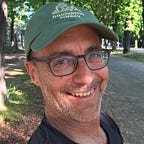Imagination>Source
Project>Colorado
‘Maybe someday the snake will stop eating its own tail’
Rivers should connect, not divide us, because they helped humanity become what it is today. But in our efforts to do things section by section, to divide things into units of time, space and money, we’ve severed the arteries that connect nature, people and communities. It’s time to make rivers whole. That’s the story of the future, and we’re writing that story now. Let’s do it with courage and imagination.
It’s time to stop fighting the same old battles and to look at things calmly. It’s time to make sure we’re asking the right questions. That requires listening, with focus and facts, but also with open hearts and minds, and letting our intuition guide us from time to time. And it would be great if we had leaders who could inspire us to be reverent and humble and optimistic. We will find ways to tackle cascading global warming impacts if we’re at our best, compassionate and caring.
Eric Holthaus recently described why ‘Climate change is about how we treat each other.’ He focused on the catastrophic impacts of Hurricane Dorian in the Bahamas, but the message about breaking cycles of cultural trauma applies to every environmental issue, including water in the Colorado River.
On the mitigation side, it’s clear. The world needs to get to zero carbon by 2050. That’s not going to solve all our problems, but it’s a solid step in the right direction. Chase Woodruff last month wrote a precise piece on what the energy transition in Colorado could look like, detailing the enormous challenges, as well as reasons for optimism. It’s doable; it’s up to us.
Every environmental story should acknowledge, like Woodruff’s does, that scientists are saying we must act in the next few decades to avoid irrevocable and catastrophic global disruptions to water and food supplies. If we don’t act now, we will run out of time.
We also need to deal with the impacts that we’ve already caused, because even if we decarbonize by 2050, glaciers and snow will keep melting, and sea level will rise for decades or centuries longer. That will require a physical response, like walls and pumps, but we will also need to deal with a global tidal wave of emotional and cultural trauma caused by dislocation and displacement.
We need to figure out how to be part of the solution instead of being part of the problem.
In that context, the Colorado River is as part of a global ecosystem network that sustains all life on the planet. We have to fully grasp that we are on the verge of catastrophically disrupting that network. Incremental adjustments that we’re discussing right now are needed to avoid the worst short-term impacts. But that’s only treating the symptoms, not the underlying problem.
We probably need to let go of the notion that we can plan, design and engineer our way out of every environmental challenge, at least not without fundamentally rethinking the moral and ethical aspects of what we’re doing, how we value nature, and how we value and treat each other.
One way of telling a hopeful story for the Colorado River starts about 8,000 years ago, when Indigenous People camped high above what we now call the Snake River. What did they think when they looked at the silvery ribbon of water cascading through the dark evergreen forest? What did they call the river?
Thinking about these things may help us recognize the impact of forcibly displacing nearly all Indigenous People from the Upper Colorado River Basin, especially in the headwaters. Acknowledgment can start a healing process that will help us avoid the endless cycle of trauma caused by the exploitation and degradation of nature and people.
Maybe someday, the snake will stop eating its own tail.
This journalism project is supported by The Waterdesk.
